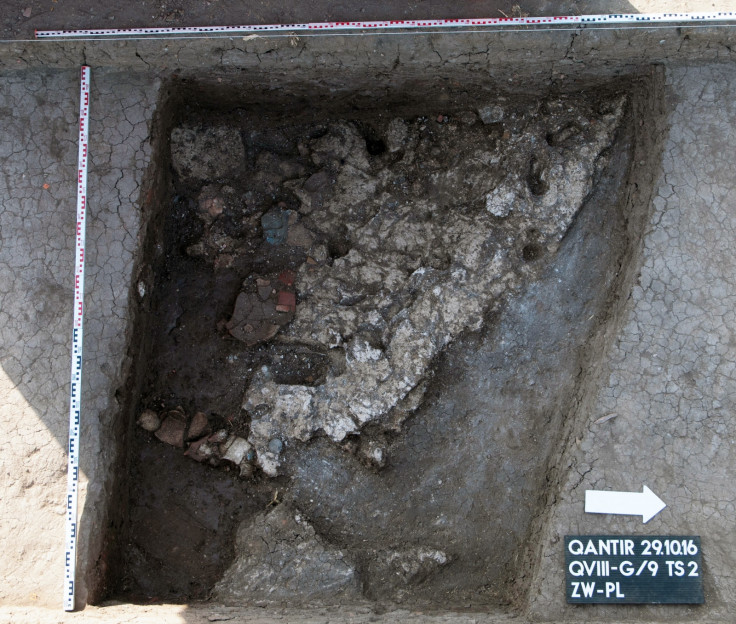Ancient Egypt: Children's footprints and painting fragments discovered in Ramesses II's capital
Archaeologists also found monumental remains that could be associated with a palace and a temple.
Archaeologists working at the site of Qantir-Piramesse, at the eastern edge of the Nile Delta, have uncovered parts of an ancient building complex as well as a mortar pit in which they identified the footprints of children.
Between 1300 and 1100 BC, Pi-Ramesse was established as the capital of Egypt and the residence of Pharaoh Ramesses the Great. Historical sources depict it as a rich and powerful city. "The accounts that we have suggest that the whole area covered by the city would have been between 10 and 15sq km, which would have made this city one of the biggest in the Mediterranean if not the world in the late Bronze Age", Dr Henning Franzmeier, field director of the Qantir-Piramesse project in Egypt's Nile Delta, told IBTimes UK.
No monumental remains subsist at the surface today, but the team of archaeologists, based at the Roemer-Pelizaeus-Museum Hildesheim in Germany, has been conducting excavation at the site for more than 35 years, to learn more about its rich history – and their work has yielded many interesting discoveries.
From 1996 to 2012, magnetic measurements were conducted to determine the layout and structure of the ancient city. The technique allows archaeologists to identify the presence of potential mud-brick buildings beneath the soil, because these slabs have a slightly different magnetic signature than the soil all around.
These magnetic measurements have now allowed them to identify monumental remains and parts of walls, which they have dated back to the Pharaonic era. They are likely the remnants of a construction site that would have been set up to renovate a monumental palace and temple complex.

"The whole site dates back to 1300 and 1100BC, but pottery fragments indicate that this particular building might have been built between 1300 and 1200BC. Our thought is that it would have been contemporary to Ramesses II, or to just a bit later", Franzmeier explains.
Children footprints
The other important discovery was that of a mortar pit, which reaches a size of at least 2.5 x 8 metres. A layer of mortar was still present at the bottom, and the archaeologists were able to make out the footprints of children. The tracks measure between 15 and 17 cm and would have probably belonged to a child between 3 and 5 years old.
The team also found smashed pieces of painted wall plaster in the pit. They have not been able to make out the motifs yet, but believe these are probably the remains of large-scale multicoloured wall paintings.

When the archaeologists go back for another season of excavations next autumn, they will focus on identifying all the fragments in the pit and reconstructing the motifs. They are intrigued by the fact that they seem to be fragments of hard plaster, something that is very unusual in Egyptian art.
"These hard plaster pieces could potentially indicate foreign techniques. The next step will be to excavate the mortal pit further to find missing pieces and try to puzzle together the fragments that we have. It might lead us to conclude that these paintings were made with a fresco technique, something very unusual for Egypt at this time", Franzmeier concluded.
© Copyright IBTimes 2025. All rights reserved.





















